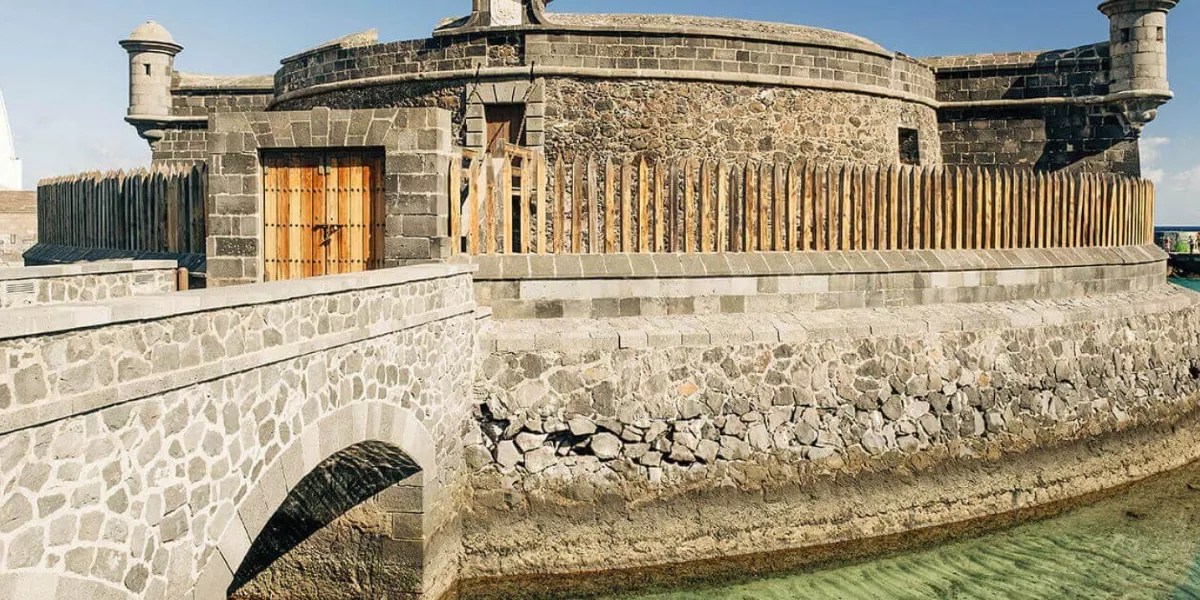The stones narrate a tale to those who possess the insight to observe them. In the Very Noble and Loyal Villa of The Orotava, stones have much to convey, irrespective of their age and grandeur. The magnificent monuments and residences signify the social and economic significance the town held, particularly in the 17th century, when various aristocratic families and affluent landowners succeeded in establishing its independence from the then capital of the Island, San Cristóbal de La Laguna.
The affluence that La Orotava experienced in the centuries following the Conquest of Tenerife was primarily due to the wine export trade, which became emblematic and was immortalised in one of its most notable structures: the parish of La Concepción, a marvel of Canarian baroque architecture.
Historians and professor at the University of Las Palmas, Sebastián Hernández Gutiérrez, detailed in one of the publications from the International Centre for the Conservation of Heritage (Cicop), that the wine trade from the La Orotava Valley to America was pivotal in securing the funding needed for the costly construction of the grand town temple. This is a tale fit for cinema.
The wines from the La Orotava Valley have long been renowned and well-received both within the Islands and beyond, particularly the renowned Malvasía, followed by the Vidueño. The wines from Tenerife, representing the Canary Islands, competed with the famous Madeira wine and were exported to England and predominantly to America. Even the illustrious English playwright William Shakespeare referenced them in several of his writings.
Wine was among the first industries to significantly develop the Canary Islands’ economy. Two facts illustrate the significance of the wine trade between the Canary Islands and the Indies. Professor of American History at the University of La Laguna, Manuel Hernández González from Orotava, specifies in his numerous writings that, “according to a report from that period, between 1700 and 1708, the 66 ships that were responsible for transporting goods between the Canary Islands and America carried a total of 9,240 tons of wine.” Nonetheless, Hernández points out that the actual figures were likely much higher as fraud and deception were rampant in the Indies trade.
Another enlightening detail comes from the Portuense researcher Carlos Cloguen, a member of one of the most prominent Irish merchant families established in Puerto de la Cruz during the 17th century. In his book A Corsair in the Service of Benjamin Franklin, Cloguen observes that “the Canarian wine trade secretly financed the American War of Independence.”
But that is a different narrative. Let us concentrate on what pertains to our discussion here: the impressive reconstruction of the Church of the Conception of La Orotava.
JEWEL OF CANARY BAROQUE
In 1496, the conquest of the island of Tenerife concluded and, as remarked by another learned figure from Orotava, historian Jesús Hernández Perera, among the first measures implemented by Adelantado Alonso Fernández de Lugo was the establishment of three churches on the Island: that dedicated to the Apostle Santiago, in Realejo Alto – where the Guanches surrendered – the one at La Concepción in La Orotava, and San Pedro in Garachico.
According to chroniclers, the hermitage of La Concepción in Orotava was erected in 1498, a modest structure that became a parish five years subsequent. The construction of this church symbolises the founding of the town of La Orotava, as the initial urban centre was established around it, designed by the distributing judge Juan Ortiz de Zárate and the councillor Diego de Mesa.
By 1516, the original village church had been completed, featuring an altar dedicated to the Immaculate Conception. This marked the birth of the mother parish and the Orotava Village, where over a hundred residents resided at that time.
At the dawn of the 18th century, in 1704 and 1705, the earthquakes preceding the eruption of the Güímar volcano caused significant and progressive damage to the church edifice, leading to its declaration as in ruins in 1753. Clearly, the necessity for a new parish was evident.
The new Concepción was constructed on the same site as the original hermitage. The first stone was laid on December 11, 1768. Just two decades later, on December 7, 1788, following the fundraising efforts of local aristocrats, prosperous emigrants, and notably, financial contributions from the Crown, trade with America, and wine exports to Europe and America, the Church of Our Lady of the Conception was officially reopened, fully restored, enhanced, and expanded.


APPEAL FOR ASSISTANCE TO THE CROWN
The Church of the Conception of La Orotava was included in the Royal Heritage, allowing it to receive funds from the nation through indirect taxes imposed on goods traded between America and Spain.
As a result, according to Sebastián Hernández, since the funds required for the construction of the new parish were inadequate, in 1754 the Orotavense City Council sought financial and technical aid from King Carlos III, who, in 1769, alongside the Council of the Indies, granted a licence for two supernumerary financial aids.
registry vessels to enable the free sale of 300 tons of wines and spirits in Venezuela, at the port of La Guaira.
The sales of the Orotavense wines generated 42,000 pesos at that time, with all proceeds directed to the construction of the town’s temple. This approach proved successful, significantly accelerating the reconstruction efforts until the funds were depleted, necessitating a second municipal request in a similar manner.
In 1768, the master stonemason from Orotava, Patricio José García, was appointed to oversee the works, with assistance from Miguel García de Chaves. By 1775, with the church constructed and the façade nearly finished, the City Council sought permission from the Crown and the Council of the Indies to sell an additional 200 tons of Orotava wine without taxes in the New World, which was expected to yield around 18,000 weights.
Furthermore, collections amassed to 20,000. Thus, after a decade of work and an overall expenditure of roughly 90,000 pesos, the temple’s completion was achieved. The initial renovation budget had been 60,000.
As noted by Viera y Clavijo, King Carlos III reportedly exclaimed: “Perhaps that church is going to be made of gold…”
In 1788, the project’s director, Alonso de Llarena y Carrasco, reported to representatives of the royal board, marking the last official act concerning works that King Charles III had responded to with repeated requests for funds from the Orotava City Council, leading him to declare, as recounted by Viera y Clavijo: “Perhaps that church is going to be made of gold…”.
Upon completion, the parish church of La Orotava emerged as one of the finest examples of Baroque architecture in the Canary Islands, incorporating neoclassical, Renaissance, and Mudejar elements, which resulted in its designation as a National Historical Monument in 1948.
Almost three hundred years after its restoration, the Church of La Concepción stands as the most treasured asset of La Orotava, acting as its historical and spiritual symbol and a remarkable heritage gem of both the Canary Islands and Spain. Furthermore, it remains a lasting testament to the deep-rooted historic connections between the Islands and the Americas.


Eternal gratitude in stone
As a token of appreciation for the substantial financial support from abroad that La Orotava received towards the restoration of its parish church, master stonemason Patricio García created a lasting testament on the façade of the Church of La Concepción, positioned above the main entrance: a stone relief featuring two globes, which symbolically embrace both the Canary Islands and America, represented by the island of Cuba and the Yucatan peninsula. During the 18th century, the primary trade ports linking the Archipelago and the Indies included Havana (Cuba), La Guaira (Venezuela), and Campeche (Mexico).















